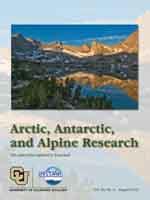Increases in air temperature have occurred in most parts of the Arctic in recent decades. Corresponding changes in permafrost and the active layer have resulted in decreases in ground-bearing capacity, which may not have been anticipated at the time of construction in permafrost regions. Permafrost model was coupled with empirically derived solutions adopted from Soviet and Russian construction standards and regulations to estimate the bearing capacity of foundations under rapidly changing climatic conditions, in a variety of geographic and geologic settings. Changes in bearing capacity over the last 40 years were computed for large population and industrial centers within different physiographic and climatic conditions of the Russian Arctic. The largest decreases were found in city of Nadym, where the bearing capacity has decreased by more than 40%. A smaller, but considerable decrease of approximately 20% was estimated for Yakutsk and Salekhard. Spatial model results at a regional scale depict diverse patterns of changes in permafrost-bearing capacity in Northwest Siberia and the North Slope of Alaska. The most pronounced decreases in bearing capacity (more than 20%) are estimated for the southern part of permafrost zone where deformations of engineering structures can potentially be attributed to climate-induced permafrost warming.
How to translate text using browser tools
1 August 2012
Permafrost, Infrastructure, and Climate Change: A GIS-Based Landscape Approach to Geotechnical Modeling
Dmitry A. Streletskiy,
Nikolay I. Shiklomanov,
Frederick E. Nelson





